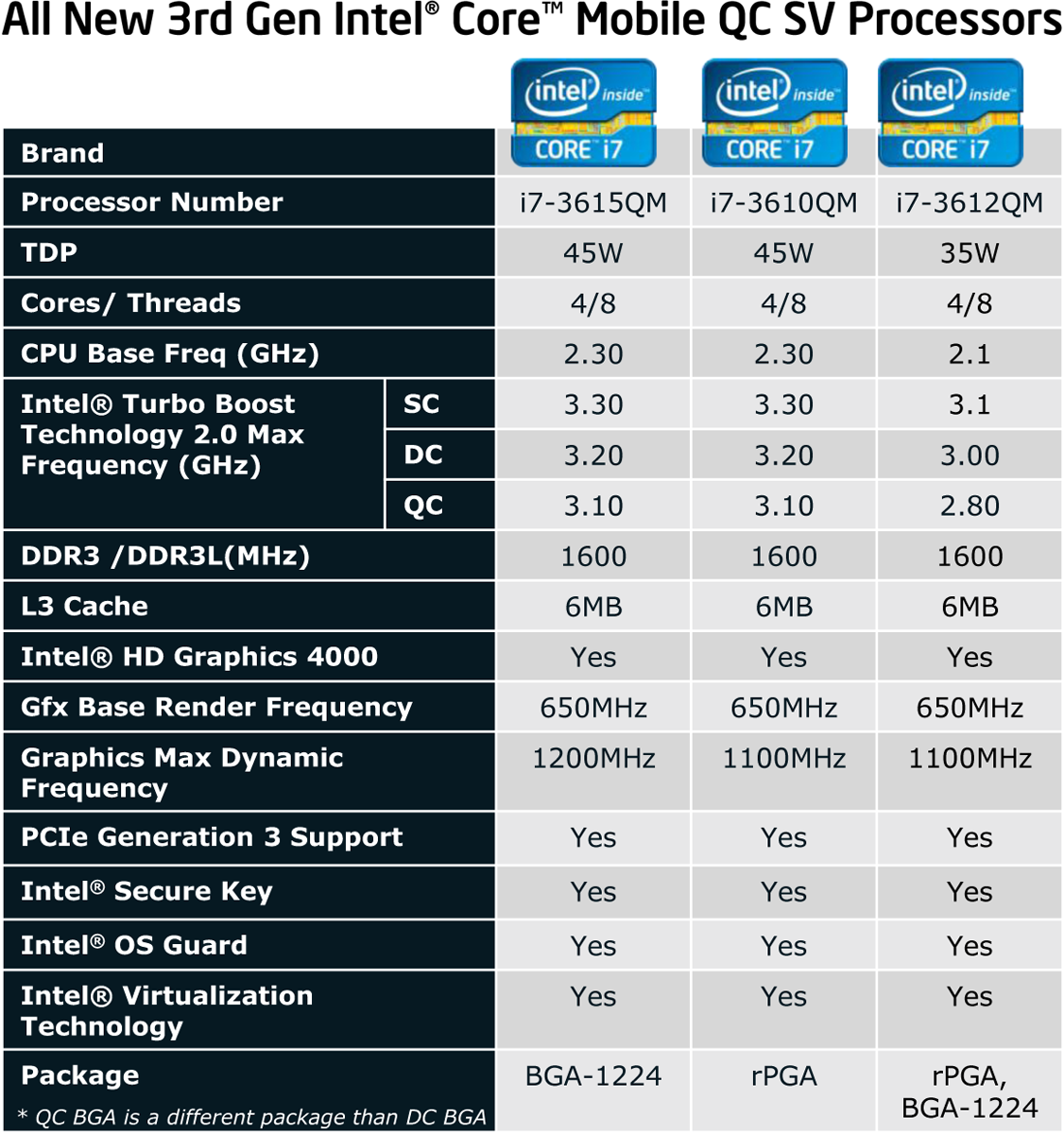Intel Corporation today introduced the quad-core 3rd generation Intel Core processor family, delivering dramatic visual and performance computing gains for gamers, media enthusiasts and mainstream users alike. Available now in powerful, high-end desktop, laptop and all-in-one (AIO) designs, the new processors are the first chips in the world made using Intel’s 22-nanometer (nm) 3-D tri-Gate transistor technology. The combination of Intel’s cutting-edge 3-D tri-gate transistor technology and architectural enhancements help make possible up to double the 3-D graphics and HD media processing performance compared with Intel’s previous generation of chips. As a result, all the things people love to do on their PCs—from creating and editing videos and photos; surfing the Web, watching HD movies or playing mainstream games— are quicker and better. In the coming months, additional versions of the 3rd generation Intel Core processors will be available to power a new wave of systems ranging from Ultrabook devices, to servers and intelligent systems in retail, healthcare and other industries.
The new high-end Intel Core processors will bear Intel HD Graphics 4000 as the on-die GPU (replacing Sandy Bridge's HD 3000), with built-in support for DirectX11, OpenGL 3.1 and OpenCL 1.1, GPU-specific on-die L3 cache, and much improved shader performance. Lower-end Ivy Bridge offerings will come with Intel HD 2500 GPU on-die. Also onboard, is Intel Quick Sync Video 2.0 technology, which the company says will help users decode videos two times faster than the previous generation, and 23 times faster than a PC “just three years old.”
Data transfer has also been improved, with support for USB3.0 built-in to the Series 7 Platform Controller Hub, and PCIe 3.0 integrated with the processor. Also onboard, with the usual Intel Identity Protection Technology (IPT) and Intel Anti-Theft technology, is the new Intel Secure Key and Intel OS Guard, where the former generates truly random numbers to strengthen encryption algorithms, and the latter defends against privilege escalation attacks. These, combined with the Intel Series 7 Chipset, can also make a portion of the screen unreadable to spyware with the “protected transaction display” feature.
The new high-end Intel Core processors will bear Intel HD Graphics 4000 as the on-die GPU (replacing Sandy Bridge's HD 3000), with built-in support for DirectX11, OpenGL 3.1 and OpenCL 1.1, GPU-specific on-die L3 cache, and much improved shader performance. Lower-end Ivy Bridge offerings will come with Intel HD 2500 GPU on-die. Also onboard, is Intel Quick Sync Video 2.0 technology, which the company says will help users decode videos two times faster than the previous generation, and 23 times faster than a PC “just three years old.”
Data transfer has also been improved, with support for USB3.0 built-in to the Series 7 Platform Controller Hub, and PCIe 3.0 integrated with the processor. Also onboard, with the usual Intel Identity Protection Technology (IPT) and Intel Anti-Theft technology, is the new Intel Secure Key and Intel OS Guard, where the former generates truly random numbers to strengthen encryption algorithms, and the latter defends against privilege escalation attacks. These, combined with the Intel Series 7 Chipset, can also make a portion of the screen unreadable to spyware with the “protected transaction display” feature.







No comments:
Post a Comment